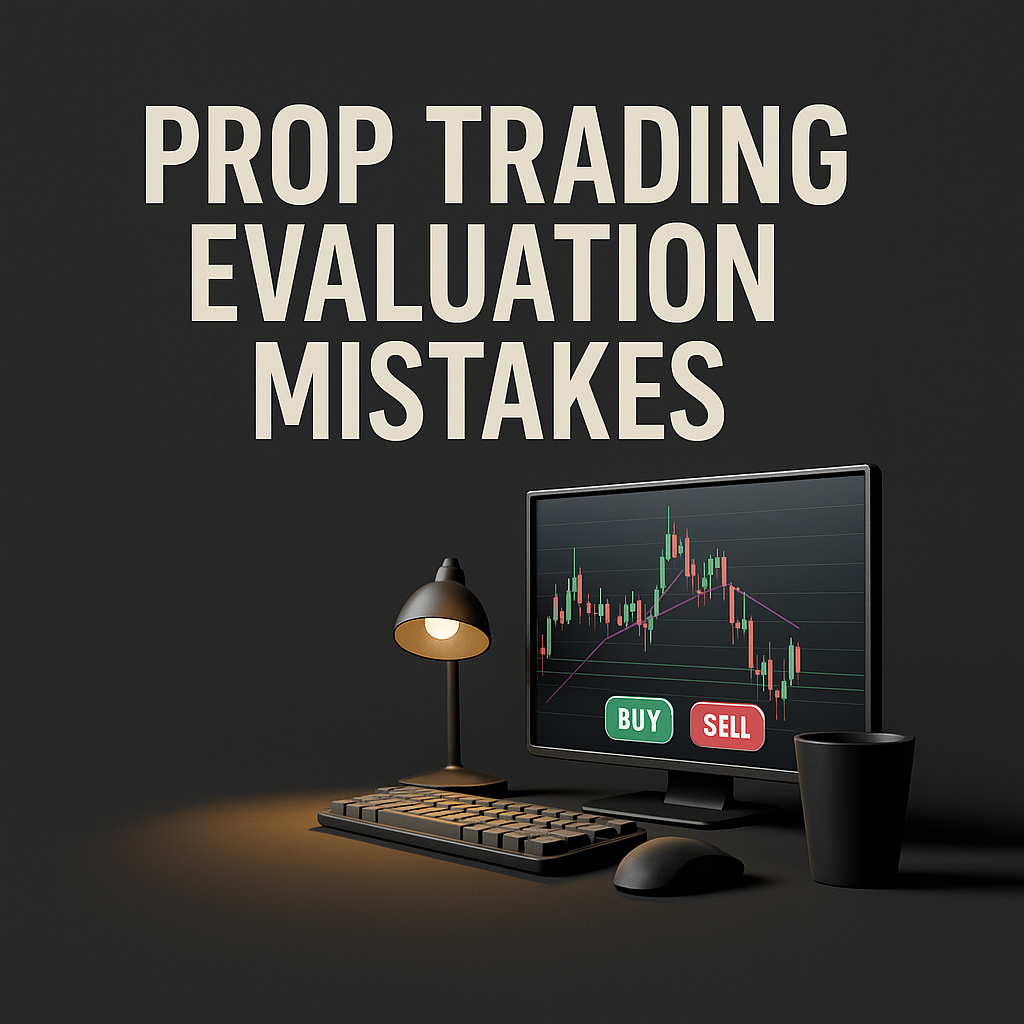Avoid These Common Mistakes in Your Prop Trading Challenge
Embarking on a prop trading challenge is a major step toward becoming a professional trader. However, many traders make prop trading evaluation mistakes that cost them the opportunity to get funded. These mistakes are often avoidable — yet they continue to hinder progress for even the most talented participants.
Whether you’re trading for the first time or giving the challenge another shot, understanding what not to do can dramatically increase your success rate. This article will walk you through the most frequent evaluation pitfalls and how to avoid them.
Why Prop Trading Evaluations Exist
Before diving into the mistakes, it’s essential to understand the purpose of evaluations. Proprietary trading firms use evaluation phases to filter out undisciplined or unprepared traders. These challenges are designed to test not just profitability but also risk management, consistency, and rule-following.
If you can’t succeed under controlled conditions, it’s unlikely you’ll thrive with real capital. That’s why evaluation periods are strict — but fair. They’re not meant to trick you; they’re meant to prepare you.
The Most Common Prop Trading Evaluation Mistakes
1. Overleveraging Early in the Challenge
Many traders begin their challenge with the mindset of “get rich quick.” They take oversized positions, hoping to hit the profit target in just a few trades. This leads to quick losses and often triggers drawdown limits.
Even if your strategy involves higher risk, a challenge account is not the place for extreme leverage. Instead, scale your risk in proportion to your current balance. Remember, the goal isn’t to make the most money — it’s to prove you can manage risk responsibly.
2. Neglecting the Trading Rules and Parameters
Every prop challenge comes with a set of guidelines: daily loss limits, max drawdown, minimum trading days, and more. Ignoring these rules — intentionally or by accident — is one of the biggest prop trading evaluation mistakes you can make.
Traders who fail evaluations often don’t review the rules in detail. As a result, they might pass the profit target but fail due to a rule violation. Always read the challenge rules at the start and review them regularly.
3. Revenge Trading After a Loss
Revenge trading can be the fastest route to failure. After a bad trade, many traders try to “win it back” immediately, increasing their position size and breaking discipline.
Rather than reacting emotionally, take a break after a losing streak. Evaluate what went wrong, reset mentally, and return with your strategy intact. This mindset is what prop firms like Larsa Capital want to see — calm, strategic decision-making.
4. Lack of a Solid Trading Plan
Jumping into a challenge without a pre-tested strategy is another common error. Many traders rely on gut feelings or signals from social media. That’s not enough.
A solid trading plan includes defined entry and exit rules, stop losses, profit targets, and risk per trade. Backtesting and demo trading are crucial before starting a live evaluation. Without a plan, your trading becomes reactive — and unpredictable.
5. Chasing Trades or Overtrading
Overtrading is typically a symptom of impatience. Traders who feel pressure to “do something” often enter low-quality trades that don’t fit their strategy. This leads to poor performance and rule violations.
To avoid this, create a trading journal and track the number of trades per day. If you notice you’re trading more due to boredom or stress, adjust your routine. Waiting for high-probability setups is a skill that separates amateurs from professionals.
How to Avoid These Prop Trading Evaluation Mistakes
Avoiding mistakes isn’t just about knowing what they are — it’s about building habits that keep you disciplined throughout the evaluation period.
Here are several ways to stay on track:
-
Review the rules daily: Keep the evaluation parameters in front of you while trading.
-
Use a checklist: Confirm each trade meets your setup and risk criteria before execution.
-
Set trading hours: Stick to a schedule to avoid emotional or impulsive decisions.
-
Limit daily trades: Cap the number of trades per day to reduce overtrading and fatigue.
-
Reflect weekly: At the end of each week, review your trades and decisions to improve.
By following these practices, you significantly improve your chances of passing the challenge and moving to a funded account.
A Smarter Approach with Larsa Capital
At Larsa Capital, the evaluation process is designed to give traders a fair and realistic opportunity to demonstrate their edge. The firm rewards consistency and rule-following, not just profit spikes. Traders who succeed often show patience, strong planning, and a commitment to improvement — all qualities that prevent the common prop trading evaluation mistakes.
Final Thoughts
Succeeding in a prop trading challenge requires more than technical skill. You must think like a risk manager, act with discipline, and follow a plan. Avoiding common prop trading evaluation mistakes can put you miles ahead of other traders who burn out quickly.
Every challenge is a test of mindset just as much as it is of market knowledge. By preparing properly, respecting the rules, and focusing on steady execution, you’ll give yourself the best possible chance to succeed — and eventually trade with the firm’s capital confidently.

